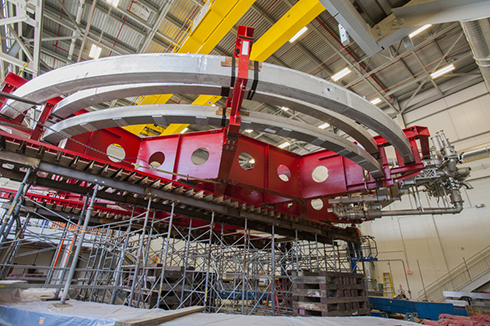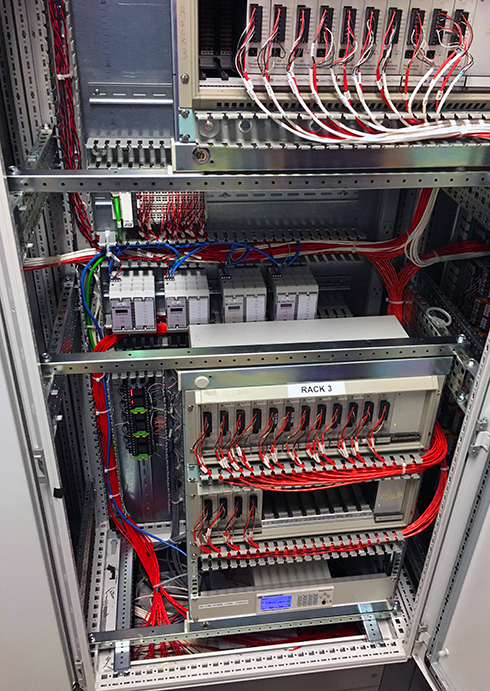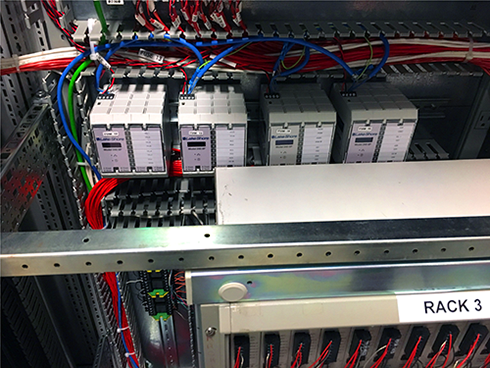We recently linked to this article in our social media: a look at how scientists at work on the Muon g-2 experiment at Fermilab have been “shimming” a large magnetic ring to create “a magnetic field so precise that even subatomic particles see it as perfectly smooth.” This 52-foot-wide superconducting particle storage ring will enable researchers to observe the precession of muons subjected to a magnetic field, basically, so they can, with unprecedented precision, see how their experimental g-2 measurements compare to and deviate from the theoretical Standard Model g-2 prediction (as explained here).

For this particle physics experiment, the ring’s superconducting coils need to be routinely cooled to cryogenic temperatures. This is where our diode sensors and transmitters—and, to a limited degree, our new 240 Series input modules—play a part. The Muon g-2 had already been using dozens of Lake Shore Cryotronics Model 231 transmitter cards for monitoring the many diodes in the PLC-based application. However, earlier this year, Fermilab agreed to take part in our beta program for the 240 Series modules.

They are currently testing out the new modules and, if accepted as replacements for the older transmitter cards, the 240 modules may give them a simpler way to wire and communicate with sensors in their cryogenic monitoring application. In their current setup, multiple sensors connect first to relays, which multiplex signals to a single transmitter card. But because the 240 Series modules are cost-effective multi-input devices, there is no need for external multiplexing; sensors connect directly to the modules’ 4-lead inputs, and the modules then handle the multiplexing and synchronization internally.

The 240 Series modules also offer simpler connections on the network side, too. As currently configured, the 231 cards connect to separate analog input modules that convert analog temperature signals to digital for transmitting to the PLC. With the 240 Series modules, all A/D conversion is done internally, and the resulting digitized values are communicated directly to the PLC via the built-in PROFIBUS interface.
The 240 modules offer other advantages, too. And we are looking forward to working with the scientists at Fermilab—as well as other large-scale physics projects—to fully leverage the capabilities of this new product for simpler, more reliable temperature monitoring in large, distributed PLC-based systems.
